How Do I Know My Home Needs an Insulation Service?
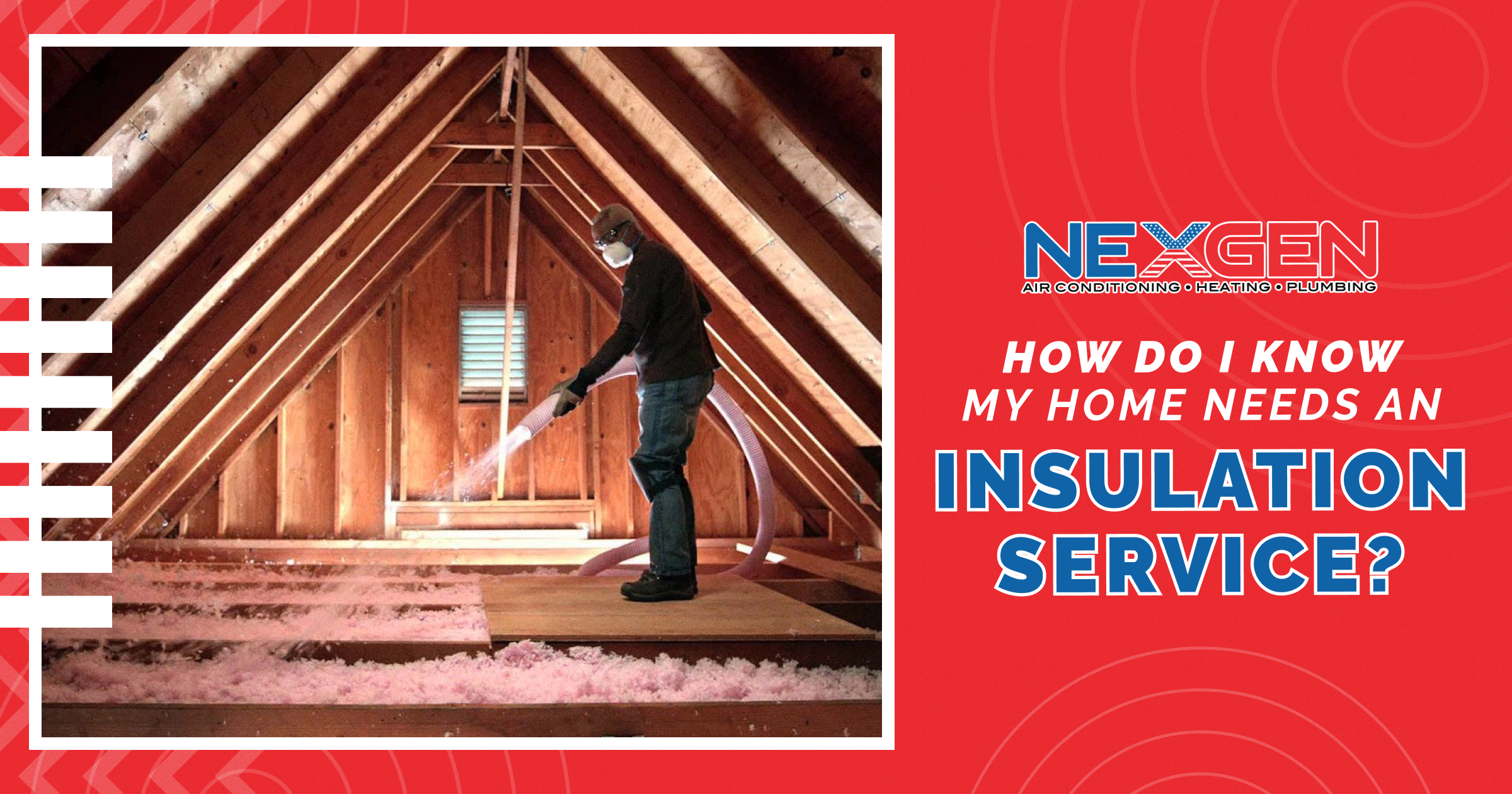
Poor insulation or a lack thereof can make your home inefficient. Many older homes aren’t well-insulated and even newer properties can benefit from improvements. An insulation service professional can determine whether you need better insulation, but there are signs it’s time to give one a call.
Signs Your Home Is Under-Insulated
High Electric Bills
Turning off lights can save some energy but usually doesn’t make a big difference. If you see a significant increase in your monthly electric bill, poor insulation may be the reason. The attic or crawl space may be the source of the problem. Heat or cold temperatures can affect your home if these areas aren’t properly sealed and insulated.
Your HVAC System Is Working Harder
If your heater runs continuously all winter or your air conditioner runs non-stop all summer, your insulation may need to be updated. Contact a professional if you’re using your heater or AC more than in the past or feel drafts near windows, doors, and other locations.
Issues with Temperature Control
Poor insulation or air leakage can make your living room chillier or the bedroom stuffier than other parts of your home. The temperature should not fluctuate as you go from room to room. If it does, your home may be losing heat at the top and cold air may be filtering in through lower sections.
You Find Moisture and Water Damage
When your home isn’t properly insulated, moisture and humidity levels can increase. Existing insulation may be water damaged. You may notice stains on walls and ceilings, damp floors, or moldy smells. These indicate you need an insulation service to have damaged materials replaced.
Pipes Burst
Pipes in exterior walls or that run outside your home, in the attic, or through the basement should be insulated. If not, they can freeze in winter and burst, causing major water damage. Call a professional to insulate your pipes if they’re exposed. It can save a lot of money later.
Water Leaks
Poor or deteriorated insulation can let water in from outside. If water is leaking into the attic, new insulation may be needed. Replacing or improving your insulation can stop water infiltration and prevent mold.
Roof Damage and Leaks
Icicles and ice dams are signs of poor insulation. If your attic isn’t properly insulated, warm air can escape and heat the snow above, forming ice that can damage shingles and siding. Over time, the damage can accumulate and cause your roof to leak.
Increased Allergy Symptoms
If your allergy symptoms get worse at home, you likely have dusty or moldy insulation. New insulation blocks out air that has pollen and other allergens. It may help alleviate symptoms such as sneezing, runny nose, stuffiness, coughing, or headache.
Pest Infestations
Insects, rodents, and other pests use any crack or crevice to seek shelter. Mice, rats, fleas, bedbugs, and other unwanted guests can burrow through insulation and some insects even feed off it. If your home is infested, your insulation may be the reason. Higher-quality insulation prevents them from getting in and finding harborage in warm, soft materials.
You Hear Lots of Outside Noise
If the sounds of traffic, chatty neighbors, and barking dogs disrupt life at home, it may be time to update your insulation. High-quality materials will block noise. Therefore, it won’t distract from indoor activities or disrupt your sleep.
Visible Insulation Issues
Insulation that’s falling from its source must be replaced. It may appear thin, worn out, or wet. When inspecting insulation, wear gloves, safety goggles, and a face mask, and note the type, its thickness, and whether it’s blocking ventilation. Turn off the circuit breaker and remove outlet covers as well; using a flashlight, determine if any insulation is present.
If your inspection turns up any concerns, contact a professional to schedule an insulation service.
NexGen Provides Insulation Services in Southern California
NexGen is the region's leading HVAC and insulation services contractor. Our qualified technicians can address the causes of energy loss, drafty walls, fluctuating temperatures, roof problems, and high energy bills. They can insulate any part of your home. Whether your attic, exterior walls, crawlspace, floors, basement, foundation, or air ducts need to be insulated, you can count on us for professional installation and an industry-best warranty of up to 12 years. We offer various financing options as well to meet your individual needs.
Our home insulation contractors are ready to help. To request a consultation, free estimate, and professional insulation service, call 833-729-9735 today.
How to Keep a House Warm Without the Furnace
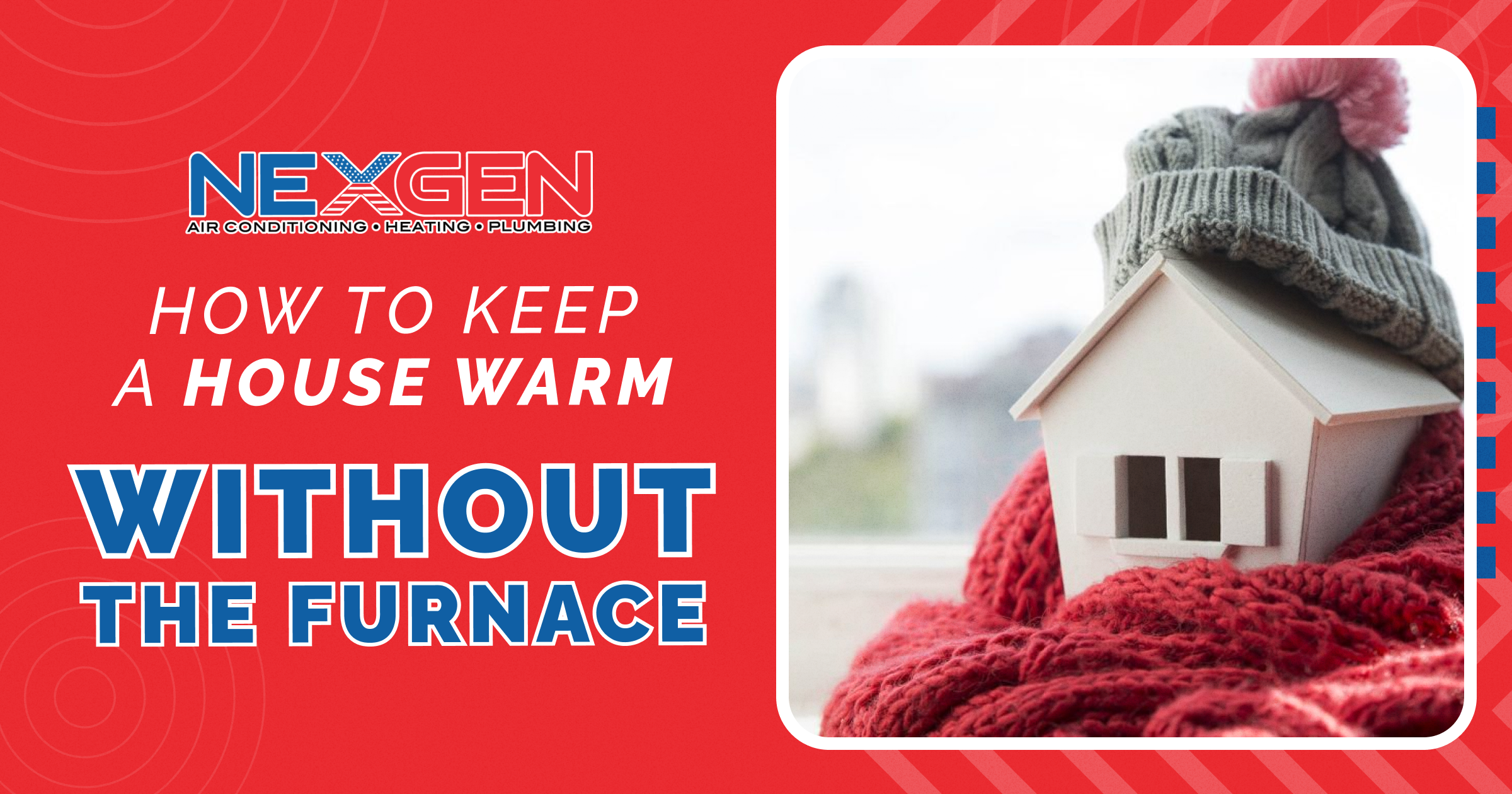 Dealing with heater issues can be frustrating. Especially at a time when energy bills continue to climb. If your furnace can’t keep up this winter or quits, there are other ways to warm up your home. Does that mean you can just forget about it? Not exactly, but while you wait for service, follow our suggestions to keep your house warm without the furnace.
Dealing with heater issues can be frustrating. Especially at a time when energy bills continue to climb. If your furnace can’t keep up this winter or quits, there are other ways to warm up your home. Does that mean you can just forget about it? Not exactly, but while you wait for service, follow our suggestions to keep your house warm without the furnace.
Ways to Warm a Room Without a Heater
Here are some simple ways to warm things up, without investing in a new heating system:
- Seal All Windows and Doors: Every window and door should be kept closed and have intact gaskets and weather sealing. Think of it this way. Even if your furnace was working, the heat produced wouldn’t stay in your home without properly sealed windows and doors. Repairing gaskets, replacing weather sealing, and using caulking or plastic can minimize air leakage and improve comfort.
- Indulge in Cooking: An oven should never be used for heating. But using the oven for cooking naturally heats your home somewhat. This is a good excuse to cook often. If you enjoy cooking, baking helps to dry the air, so is a great idea. Braising, roasting, and heating soups and broths on the stove help too. If possible, try to avoid producing steam, as it can make the air more humid (in winter, this makes it feel colder).
- Rearrange Your Furniture: External walls are typically colder. Therefore, move your furniture against internal walls so you’re less likely to feel the colder air. This might not warm up your home per se, but you’ll certainly not miss your furnace as much.
- Allow More Sun to Reach Your Home: If plants or sheds are blocking sunlight, remove them. Also, move any items sitting against sun-exposed walls on the side of your home. Therefore, you can naturally keep your house warm without the furnace.
- Use Curtains: Curtains can block chilly drafts of air. You can open them to let in natural light. Meanwhile, closing them when the sun’s not out helps prevent heat loss. Simple clear shower curtains can be quite effective at capturing much-needed warmth.
- Seal Off Unused Rooms: Heat loss can be reduced by closing the door to an unoccupied room. This creates an extra barrier between occupants and the cold air outside. Even without your furnace, heat can still circulate and pass from one room to another, but you can try to keep it where you need it.
- Lay a Rug or Carpet: Wood, stone, and other flooring materials often feel cold to the touch. A rug or carpet feels warmer and can prevent heat loss through the floor, thereby keeping your home warmer.
- Light Candles: Candles are cheap to buy and produce heat. Candle heaters are an alternative to a central heater or a fireplace; while they don’t produce as much heat, they can provide a fair amount of warmth. If you use candles, don’t place them near flammable items or leave them lit when you’re not in the room.
- Insulate the Attic and Crawlspace: A great deal of heat can escape through uninsulated attics and crawlspaces. When these are properly insulated, heat loss can be minimized, even if your furnace isn’t working.
How Warm Should My House Be?
Around 64℉ to 72℉ is comfortable for most people. If your thermostat is working properly, it will show how warm or cool your home is, even while you’re waiting for furnace repair. As you take steps to keep your house warm, check the thermostat or an indoor thermometer often. Therefore, you can see if the temperature is close to an ideal target.
Don’t Keep Your House Warm Without a Furnace for Too Long
These tips are meant to help you stay warm while waiting for furnace repair. They can also help your furnace (when it’s running) produce just as much heat and comfort without working as hard. But in times of despair, don’t give up on your furnace entirely. Neglecting to repair or maintain it can put your household in danger and, the longer you wait, the more expensive it will be to fix.
NexGen is #1 in heating repair in Southern California. Our trained technicians arrive stocked with fan blades, gaskets, igniters, flame sensors, and other parts your furnace might need. Available 24/7, our team arrives promptly and fixes issues quickly. Call 833-729-9735 to request immediate furnace repair in your home.
Top 10 Heater Allergy Symptoms

A central heating system will keep your home warm and cozy all winter if it’s working properly. Even so, it can still have issues. Heater allergy symptoms that appear when your HVAC system is running mean dust, pollen, mold, pet dander, and other allergens (and possibly toxic compounds) are in your heating system, ductwork, and indoor air.
However, your symptoms may disappear when the heater is turned off or you leave your home. To help you recognize the signs of an issue, here are the top 10 heater allergy symptoms to look for.
- Aggravated Respiratory Illnesses: If you have asthma, severe allergies, or other respiratory issues, a contaminated heating system can worsen your symptoms. It can trigger asthma attacks that can last longer than usual.
- Sinus Infections: Contaminants from air ducts and indoor spaces enter your nasal passages every time you breathe. They can be drawn up into your sinuses and cause inflammation. Sinusitis can be painful and have a variety of effects unless it is properly treated.
- Sneezing: Sneezing is a way to get rid of irritants. In the case of heater allergy symptoms, it’s due to airborne particulates and is often accompanied by sinus congestion.
- Coughing: Particulates and allergens can make their way into your throat and cause dryness. When combined with the presence of irritants, this can cause a great deal of discomfort.
- Sore Throat: The dryness of the air can trigger a sore throat. The irritants in the air don’t help, and neither do bacteria that can remain suspended and cause infections when breathed in.
- Headaches: Sinus headaches and migraines can be triggered by clogged sinuses. The odor from dust, mold, or fungus can cause a headache as well. It’s also one of the symptoms that your furnace may be releasing carbon monoxide.
- Watery/Itchy Eyes: Dusty air can cause your eyes to feel itchy and become teary.
- Fatigue: Persistent exposure to allergens can often leave you feeling tired, fatigued, or sleepy. You may feel dizzy at times as well.
- Nausea/Vomiting: Tiny particles aren’t the only things your heater can release. Volatile organic compounds, or VOCs, include toxic chemicals that can make you feel sick.
- Skin Rashes: Various types of skin rashes can be caused by VOCs as well. Many VOCs evaporate at room temperature. However, some do so more slowly in colder temperatures, which is why dust may hold more allergens in the winter.
Why Winter Makes You More Vulnerable to Heater Allergy Symptoms
Allergy symptoms don’t only occur because your heater is running. Dust also becomes harder to filter out. When it’s warmer, air tends to hold more moisture, making it easier for particles to stick together and fall to surfaces, where dust forms a coating. In colder, less humid air, dust particles tend to stay apart and remain in the air longer. Since they’re smaller, they can easily slip through air filters.
Meanwhile, breathing in dry air can make you more susceptible to allergies. That’s because mucus catches pollutants and protects your body against them. Dry mucus linings and sinuses don’t catch allergens, bacteria, and viruses as effectively. Heater allergy symptoms are your body’s reactions to this constant exposure. Infections can become more frequent as well.
NexGen Can Help Alleviate Your Heater Allergy Symptoms
NexGen installs and services high-quality HVAC equipment and also provides duct cleaning, air duct sealing, and insulation services to help reduce allergens and improve energy efficiency. We also offer comprehensive maintenance services as part of our X Protection Plan. It includes priority service, HVAC tune-ups, and discounts on indoor air quality products. Therefore, you can depend on our team to help protect your home, your comfort, and your health. To get started, call 833-729-9735 today.
Have No Heating? What to Do Before Calling a Technician
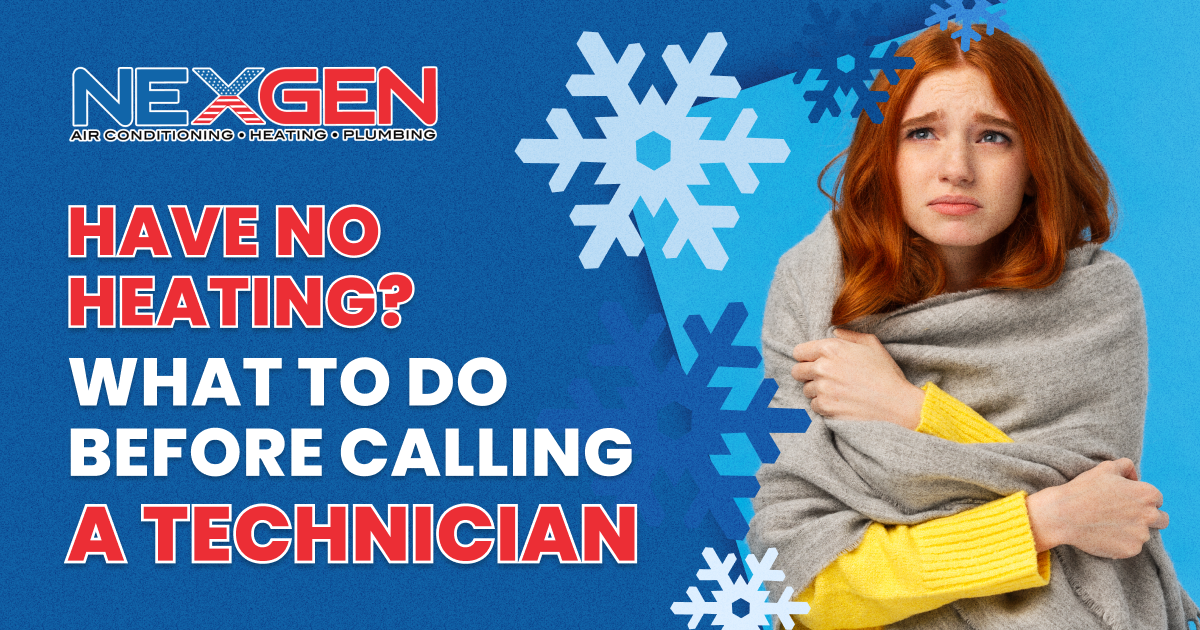
It’s the coldest time of the year and you have no heating. This is a scenario no one wants to face. If your furnace stops working, like most people you’re probably thinking the worst. But a lack of heat is not always a sign of a full-fledged furnace breakdown. Before you call an emergency HVAC company, start with these troubleshooting steps to see if you can isolate if not resolve the problem on your own
See If the Thermostat Is On
Check the thermostat display. If it’s not on as usual and your furnace isn’t running, the thermostat’s batteries may have drained or the device isn’t getting power. Change the batteries (if applicable) or go to the electric panel and check for a tripped circuit breaker. Resetting it should get your heater going again.
If the thermostat is on, verify it’s in heat mode. There will be no heating if the system is set to cool, so adjust as necessary. Check the fan settings as well. If the fan is set to “on” mode instead of “auto”, it will run even when the heater’s off and may blow cold air. Also, make sure the thermostat is set higher than the room temperature, which signals the furnace to start when the air is cooler; adjust accordingly to see if the heater cycles on.
Check If the Heating Equipment Is Switched On
Every furnace or air handler has a switch located on the unit or a nearby wall. The system will work only when the switch is in the “on” position. It’s easier than you think to accidentally hit an on/off switch. So, this is a good place to look if a heater isn’t running.
Install a New Air Filter
A clogged filter can cause a furnace to overheat, in which case it will shut down. Locate the filter and check it for dirt and dust. Change the filter if it’s dirty. This is also a common reason for no heating even when the blower is running. To avoid future issues, replace a flat filter once a month and thicker pleated filters every three months; or, more frequently if you have pets or kids.
Look for Blocked Vents
If a vent is blocked or closed, this can also cause a furnace to overheat and shut off. Check the return air grills throughout your home to make sure furniture, curtains, rugs, and objects aren’t blocking them. Vent louvers must be open as well. If you find any closed ones, moved them to an open position and see if your furnace kicks in. Then check outside vents for leaves or debris and clear them to open the intake or exhaust.
Check the Fuel Connections and Supplies
Locate the gas valve to see whether it was turned off by accident. Turn the handle on the gas meter until it is parallel to open the line. If you have an older furnace, check the pilot light to see if it is on; if not, shut the gas for 10 to 15 minutes and follow the owner’s manual for relighting the flame. Call for help if you smell gas.
If you have an oil or liquid propane heater, check the fuel storage tank. You may have no heating because the unit’s fuel source has drained. Refilling the fuel tank should resolve the problem. Also, check the tank’s valves and open them if necessary; this will make sure fuel will flow to your heating equipment.
Inspect the Chimney Exhaust Flue for Debris
This step requires a little bit of work but can save you an emergency call. Turn off the furnace and then set the thermostat as low as it goes. Then remove the duct and check the flue for debris, birds, or other animals. A clogged flue can prevent the system from exhausting so it could stop working. Once the exhaust is clear, reassemble the parts in the order you removed them.
Look for Drainage Issues
Furnaces can drain gallons of condensation per day. If the drain lines clog up with sediment or mold, a heater will stop working. To resolve the issue, remove the drain hose and clean it with a mix of bleach and water. Let it sit for a few minutes and then flush out the hose before reinstalling it.
Check for Ice
Ice causes big problems for pipes. If you use a hot water boiler, see if the condensate pipe is frozen. Ice buildup tends to occur at the bends in the pipe. You can melt ice by pouring hot water (not boiling) down the pipe or wrapping the pipe in a heat blanket. Once the ice is gone, reset the boiler.
Heavy ice on a heat pump can block heat transfer and damage the system. While a heat pump has a defrost cycle, ice accumulation is a different story. It needs to be resolved by turning off the power and pouring warm water over the affected area. Gently chip at the ice if you can and clear any snow, vegetation, or outdoor items from the unit. Also, inspect the gutters for leaks that can cause water to drip on the unit and freeze (and clear or repair a gutter as needed).
Do You Still Have No Heating? Call NexGen
If none of these steps have gotten your heater working again, it’s time to call a professional. NexGen employs qualified heating repair technicians who are prompt, trustworthy, and experienced at fixing any problem. Our trucks are fully stocked with parts and equipment so repairs can be completed quickly. We’re available 24/7 for emergencies. If you have no heating, and can’t figure out why, call NexGen at 833-729-9735.
Are There Combination Heating and Air Conditioning Units for Apartments?
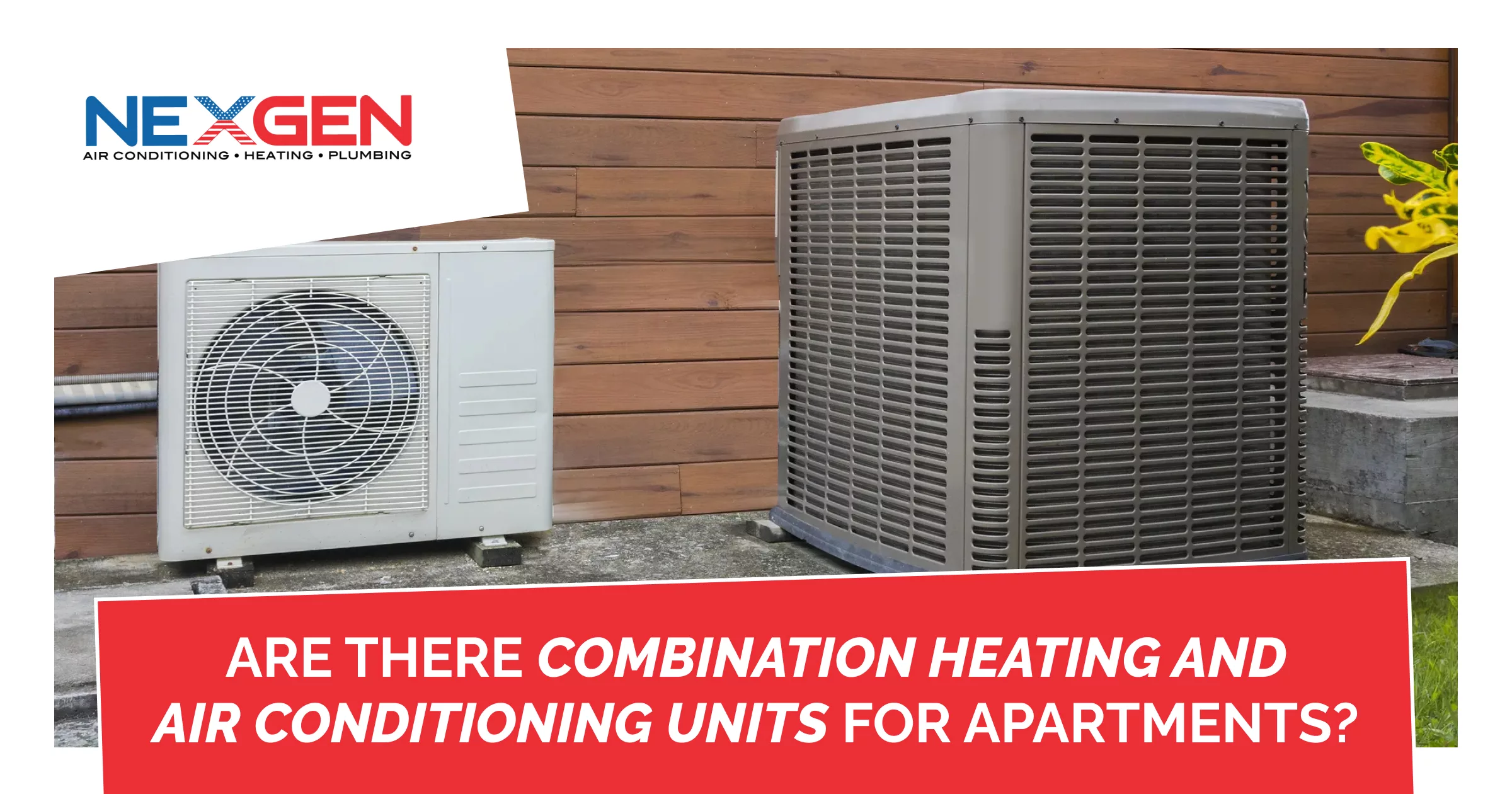
Apartment dwellers often face heating and cooling challenges. Tight space and design constraints can create issues with air movement. A lack of windows doesn’t help either. Limited airflow not only reduces comfort but can also increase humidity, mold growth, and paint deterioration. However, these issues can be avoided by installing combination heating and air conditioning units for apartments.
What Combined Heating and AC Options Are There?
A building can be served by decentralized heating systems, each of which serves a specific area, or a central system. Central units control temperature, humidity, and airflow from a single source. They may have a split design with an outdoor cabinet containing the compressor and condenser, while the evaporator is contained in an indoor unit. Air handlers and furnaces are typically separate components as well.
Common Combination Heating and Air Conditioning Units for Apartments
These aren’t the only heating and cooling systems that can be used in apartments. The following alternatives can save space and provide efficient comfort:
Packaged Central AC
A packaged central unit contains the condenser, compressor, and evaporator in a single cabinet. The unit is typically installed outside (on the ground or the roof). A packaged system often contains electric heating coils or a natural gas furnace along with an air conditioner (a separate indoor furnace is not required). Air circulation is managed by air supply and return ducts that pass through the roof or an exterior wall.
Ductless Mini-Split System
A mini-split is a cooling and heating system that allows the temperature to be adjusted at a certain level for one room, and another level in a different room. An apartment often isn’t large enough for a central unit. While the condenser is installed outside the building, compact mini-split air handlers can provide heating or cooling in individual rooms or small apartments. Separate AC and heater components aren’t required.
Packaged Terminal Air Conditioners (PTACs)
Often installed below windows in hotels, PTACs are self-contained, ductless units. They can heat or cool small areas like hotel rooms, small one-bedroom apartments, and residential add-ons. A PTAC can provide electric heat or be a reverse-cycle heat pump. Either way, it’s a reliable solution and many units have advanced digital controls to make them simple to use.
Combination Heating/AC Considerations
Several HVAC options are available for small spaces. That means there are choices to make, not only on the type of system but also based on specific factors. Every building is different so it’s important to consider the following:
- Size: The unit will work efficiently only if it’s sized right for the apartment’s square footage. The layout of the building matters as well. Excessive capacity will cause the system to use more energy and be more costly to run. A lower-capacity system won’t provide enough heating or cooling; it will struggle to keep up and wear out more quickly.
- Installation Compatibility: To install central air conditioning, a building must have ductwork. Upgrading an old structure with ducts can be difficult and expensive. Combination ductless HVAC units avoid these issues.
- Zoning: Combination systems can be zoned to provide heating and cooling to separate apartments (preferred in multi-tenant residences) or divide larger apartments into areas where the temperature can be set to different occupants’ preferences.
And, as with any HVAC system, look for a warranty. It can save a lot of money especially if something breaks while the unit is still covered. The length of the warranty and what it covers depends on the unit and brand. Read the terms of the contract to know what parts are covered and if labor is included before you sign it.
Purchase Combination HVAC Units from NexGen
Proudly serving Southern California, NexGen offers ductless heating and cooling systems that are compact, versatile, and efficient. These include wall-mount heat pumps with impressive heating and cooling ranges. Our licensed technicians provide HVAC installation, repair, and maintenance services. By signing up for our X Protection Plan, you can receive discounts and priority service, while specials and financing options are available. To learn more about our offerings and combination heating and air conditioning units for apartments, call (833) 729-9735 today.
Types of Heating Systems
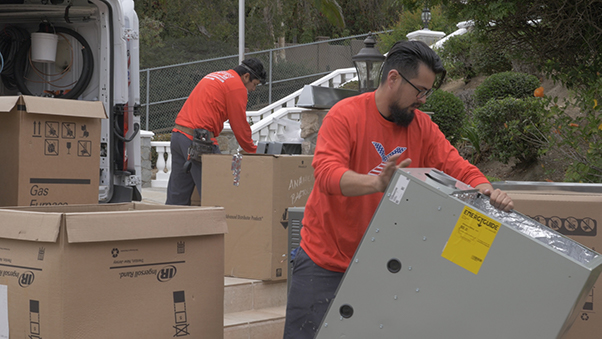
The majority of Temecula residents depend on Heating Systems to warm their homes during the cold winter months. There is a wide range of heating systems that are still being used around the nation but for the most part, the city of Temecula only sees a few different types. I will discuss the different types and why you might choose one over the other.
Forced Air Systems:
Forced air systems are a very common type of heating system, which usually includes a furnace. They can get their heat energy from a few different sources; natural gas, electricity, oil or propane. This heated air is then ‘forced’ through the air ducts around your house, allowing for every section of your home to be heated properly. Since the furnaces are the heat source, they usually need to be placed in safe areas such as a garage, basement, attic or crawlspace.
What does a Furnace do?
A furnace works by pushing heated air through the ducts that line your home. The fuel used by the furnace is mixed with air and burned. Air is then pushed through the heat exchanger which is then pushed through the air ducts. Any combustion product is then vented out through the flue pipe, in effect keeping all residents safe of unwanted particles. A furnace is the most common type of heating system in the Temecula area just because of the ease of use and reliability. Furnaces have been around for many years so depending on your model, the efficiency and cost of using can i buy canine valium will vary.
Heat Pumps:
Heat Pumps are a great system for areas that are not affected by crazy weather. If you live in an area that does not normally feel the 20-degree lows or 115-degree highs, then this system is perfect for you! It operates on electricity and works as both a heating and cooling system. By using two systems, an outdoor and indoor, it allows for air to be moved inside or out depending on desired temperatures. Almost all heat pumps use this sort of system, forcing warm or cold air through the vents in the home. But what most people don’t know is that there are two different types of heat pumps. The Ground-Source heat pump and the air-source heat pump both have their different use cases. The ground-source will always be an eye catcher; This is because of the natural ‘green’ energy that this type of pump uses. They also tend to be much more efficient. But one con of ground source heat pumps are the costly upfront costs of setting the system up. Geothermal energy is known for being expensive but is very popular because of the longevity of the system life.
Call NexGen Today
Our expertise and commitment to customer satisfaction make us the leading HVAC company in Southern California. To learn more about our equipment, services, and protection plan,
book an appointment online or call
888-277-0415.
What Type of Heating System Do I Have?
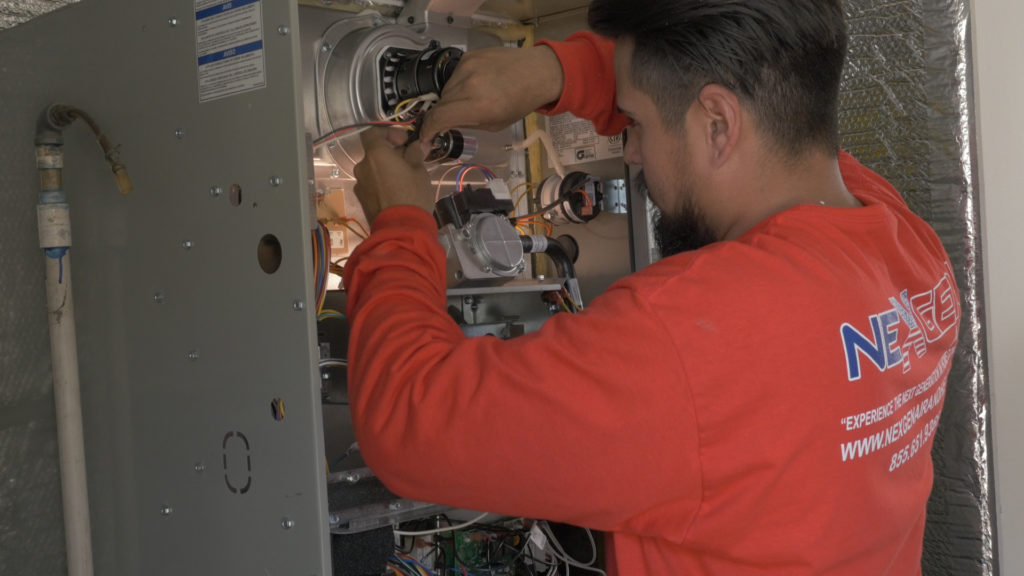
The first step of being a smart, responsible homeowner is knowing every aspect of your home. From what solar panels your roof is equipped with, to the type of home heating system you have, it is crucial to understand how your home works in order to assure the long lifespan of your appliances. The city of Yorba Linda tends to see a wide range of different temperature ranges. Recurring maintenance on your heating system will keep it up and running for years, allowing you to keep your home warm during the cold winter months. At NexGen Air, we strive to be the best in every aspect of home air conditioning and heating so next time maintenance is needed please give us a call!
What types of Heating Systems are there?
- Forced Air Systems: forced air systems are a very common type of heating system, they usually include a furnace or heater. They can get their heat energy from a few different sources; natural gas, electricity, oil or propane. This heated air is then ‘forced’ through the air ducts around your house, allowing for every section of your home to be heated properly. Since the furnaces are the heat source, they usually need to be placed in safe areas such as a garage, basement, attic or crawlspace.
- Heat Pumps: Heat Pumps are a great system for areas that are not affected by crazy weather. If you live in an area that does not feel the 30-degree lows or 100-degree highs, then this system is perfect for you! It operates on electricity and works as both a heating and cooling system. By using two systems, an outdoor and indoor, it allows for air to be moved inside or out depending on desired temperatures.
- Boilers: Boilers are known for being a little outdated but definitely get the job done! They use a furnace and steam converter which converts the heat to steam. These systems get their power from gas, propane, oil or electricity.
- Package Units: Package units are known for being smart, compact and easy to use. All parts come in a single ‘package.’ This package tends to be stored on the roof or attached to the side of your home. These packages usually have both heating and cooling components, which are distributed throughout your home using the air ducts.
- Geothermal Heat Pumps: Geothermal is the new big thing in the twenty-first century. Allowing for the use of clean energy, geothermal heat pumps, heat homes while staying good to the surrounding environment. These systems are normally pretty expensive for initial installation but are reliable for years to come.
Call NexGen Today
Our expertise and commitment to customer satisfaction make us the leading HVAC company in Southern California. To learn more about our equipment, services, and protection plan,
book an appointment online or call
888-277-0415.















